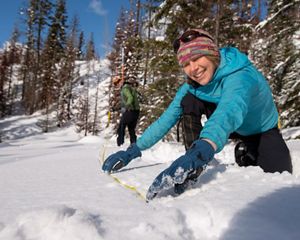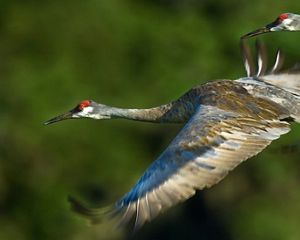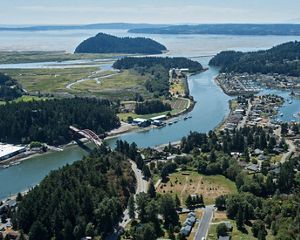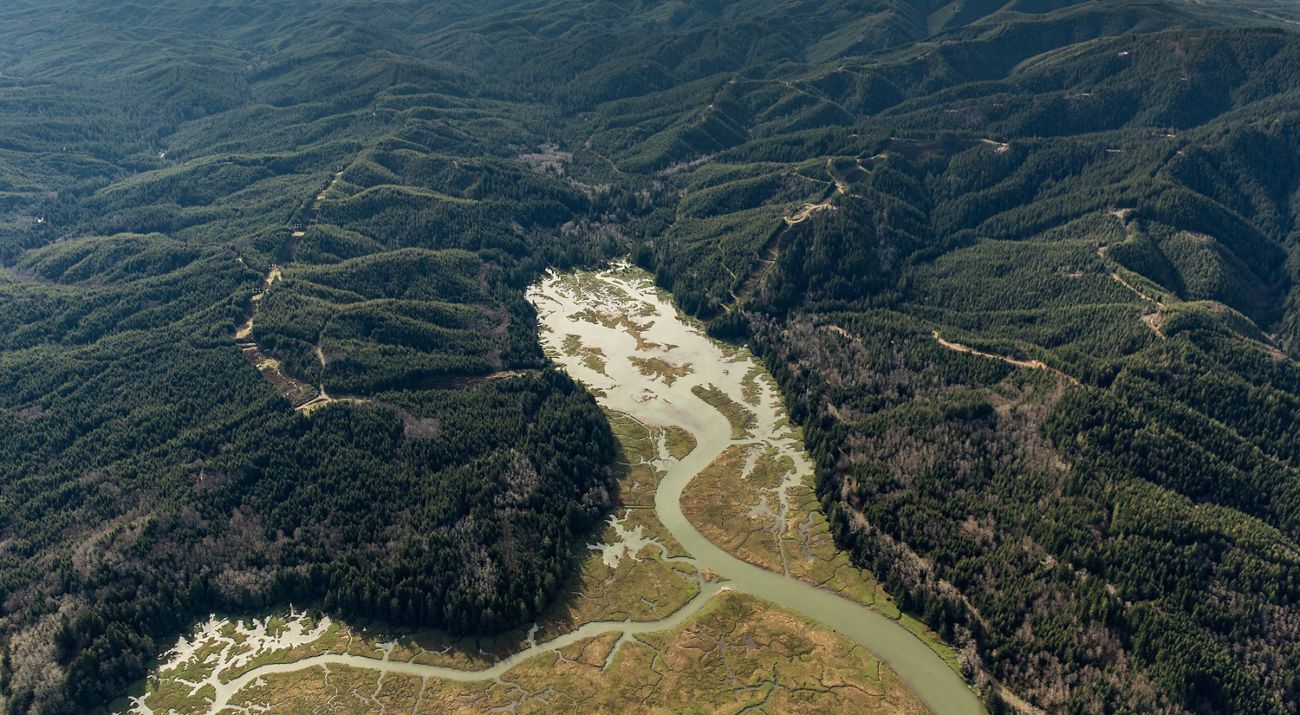
A New, Old-Growth Future
A forest restoration experiment has made large-scale conservation possible in Washington.
Fifteen years ago, at the Conservancy’s Ellsworth Creek Preserve in southwest Washington, Dave Rolph could drive his truck along a logging road by the creek. Now that road is gone, and he tromps through 30-foot alders. “The change is amazing,” says Rolph, TNC’s director of land conservation for Washington state.
Ellsworth Creek is not just any preserve. In 2000, TNC in Washington had a bold idea: buy the entire Ellsworth Creek watershed, all 7,600 acres of it. Bolder yet: More than 4,000 acres of that had been heavily logged for decades. This would be major restoration, not simply preservation.
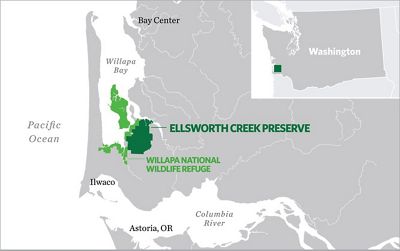
A Bold Experiment at Ellsworth Creek
It was a radical idea, explains TNC’s Oregon Director of Conservation Science Ryan Haugo, who previously worked in Washington. “At the time, moving from the protection of small preserves to entire watersheds, and diving headlong into active forest management, was a huge step for The Nature Conservancy.”
At first, there were skeptics, even inside TNC. After all, what was the conservation value of buying a clearcut?
But our vision was clear, long-term and big: Restoration would prevent further habitat fragmentation and logging, and it would connect to 7,500 acres of federally protected coastal forest habitat at the Willapa National Wildlife Refuge for even more impact.
And the Ellsworth Creek Preserve would also provide a grand laboratory for future, large-scale forest and stream restoration.
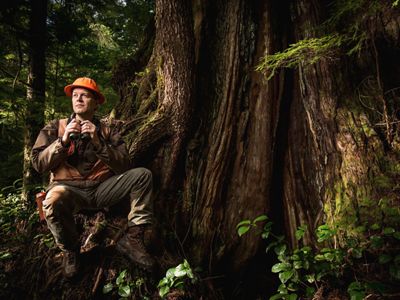
Through Thick and Thin
The Ellsworth experiment is underway.
We have worked in the landscape for more than 18 years, implementing and testing three different experimental restoration approaches across several sites:
- Passive restoration: In this approach, we allow forest stands to develop without intervention and remove all roads. Road removal protects amphibian and salmon habitat.
- Active restoration: Here, we thin forest stands to promote growth and a more complex forest structure. We maintain an appropriate road system. This includes additional plantings of native species like spruce and cedar.
- Control: These stands are not manipulated and provide valuable comparative data for evaluative research. We maintain an appropriate road system, which allows for possible changes to management operations.
Throughout the preserve, we’ve also decommissioned 25 miles of logging roads as of 2019. Road cuts are prone to landslides, which choke stream habitat with sediment, impacting salmon and other species. Roads and culverts channel runoff, too, triggering floods and reducing natural soil infiltration.
A New Phase
It’s been almost 20 years since the Ellsworth Creek experiment began. Diversity is returning to this mossy forest. Streams are richer in complexity: featuring the pools, woody debris and cool shaded water that support salmon and other aquatic life.

We are beginning a new phase at Ellsworth Creek. After two decades of planning and active restoration, we’re starting to stand back and watch. Using cutting-edge science, we will quantify the effect that restoration treatments have had on forest structure, biomass, carbon and biodiversity.
Meanwhile, skeptics of this bold experiment have become supporters. The Ellsworth Creek Preserve has become proof of concept for many other forest-restoration projects on the Olympic Peninsula and beyond. “The lessons we’ve learned at Ellsworth have really enabled us to grow and do conservation across the Pacific Northwest,” says Dave Rolph.
Quote: Dave Rolph
The lessons we’ve learned at Ellsworth have really enabled us to grow and do conservation across the Pacific Northwest.
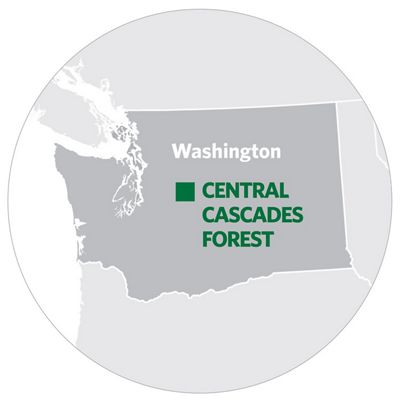
Central Cascades Forest: Thinking Bigger
Two hundred miles east of Ellsworth Creek, a mountain biker zips along a sunny trail. The meadow is ablaze with flowers, the air sweet with pine. The path ahead—for the biker, the forest, and the community—is full of promise.
The trail is within the 46,000 acre Central Cascades Forest, which TNC secured in 2014. If the Ellsworth Creek purchase was big, it set the tone for even bigger acquisitions like this one. Our goals in the Central Cascades: restore forests and streams, work with conservation partners, benefit the local community, sustain a resource economy, develop better wildlife corridors, enhance recreation and improve resilience to fires.
Ambitious? Yes. Doable? Absolutely.
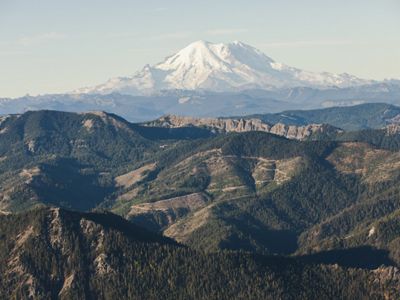
Fighting Fire With Fire
These are working forests, central to the area’s resource- and recreation-based economy. Partners range from federal agencies to water districts, from timber companies to tribes and community members.
Yet these diverse stakeholders share at least one goal: reduce the risk of devastating fire. A century of suppressing natural fires, along with indifferent post-logging management, have led to forests crackling with dead timber and dry fuel. Over the last few years, hot, dry summers have led to ravaging fires that endanger communities, slash resource and recreational value and choke the air with smoke.
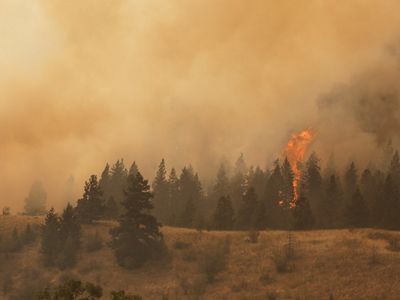
With a warmer, drier climate predicted, fire risk will only worsen. In fact, 2018 was the worst year on record in Washington with 1,850 wildfires. In the past five years, over two million acres of land have burned.
Selective thinning is one way TNC is building fire and climate resilience in the Central Cascades Forest. Controlled burning—fighting fire with fire—is another.
“Prescribed fire helps restore dry forests to more natural conditions,” explains Ryan Haugo. “That would make these forests more resilient as we deal with climate change and worsening summer droughts.”
One challenge is that most fire fighters are used to fighting fires, not setting them. So The Nature Conservancy has partnered with state and federal partners and local fire districts for a formal training exchange called TREX. TREX is a unique opportunity for fire personnel from across the region, and across agencies, to learn about working with prescribed fire, as well as it’s social, economic and ecological aspects.
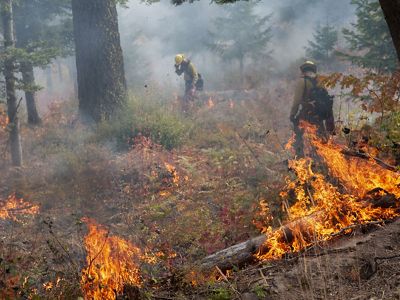
TREX, along with local jobs we provide for work like thinning, helps deepen community engagement. Volunteers, too, have come out of the woodwork to help build biking and hiking trails in the forest and for other projects.
Such community involvement is not only gratifying but critical for ensuring the long-term health of the Central Cascades Forest, explains Darcy Batura, TNC’s Forest Partnerships Manager. “People support what they create,” she says. “It’s important that the community sees itself reflected in our work.”
Forward Impact
The Nature Conservancy’s pioneering, science-based restoration work plays a big role in the future of the state’s forests. In November 2017, the state Department of Natural Resources unveiled its 20 Year Forest Health Strategic Plan, which identifies 2 million acres of forest across the state for restoration, including prescribed burns. At the heart of this plan is Nature Conservancy science.
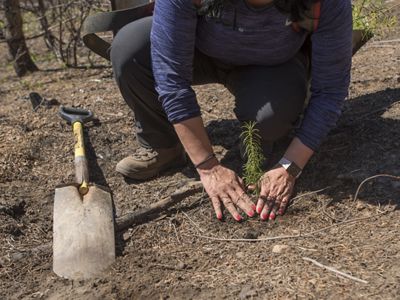
Envisioning a new, old-growth future rising from the clearcuts at Ellsworth Creek Preserve was a radical idea 20 years ago. But from this out-of-the-box approach has grown the idea that complex, large-scale restoration is not only possible, but is the future for Washington’s forests. Thinking big and thinking ahead is the legacy of The Nature Conservancy in Washington, and our future, too.
